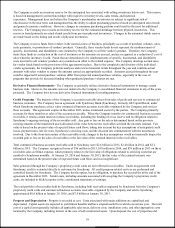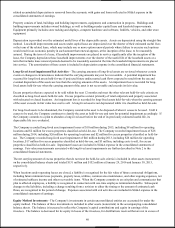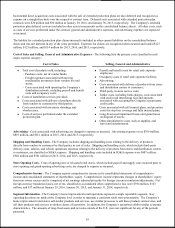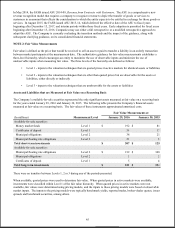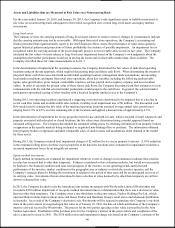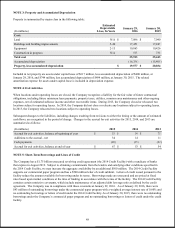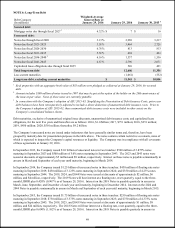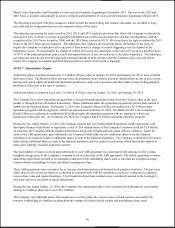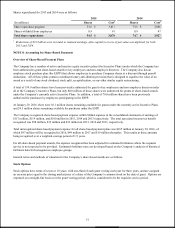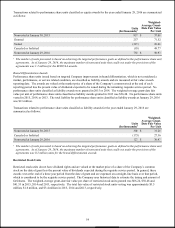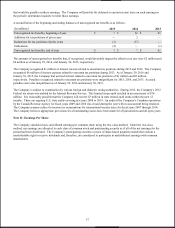Lowe's 2015 Annual Report Download - page 56
Download and view the complete annual report
Please find page 56 of the 2015 Lowe's annual report below. You can navigate through the pages in the report by either clicking on the pages listed below, or by using the keyword search tool below to find specific information within the annual report.
47
value of its portion of the overall joint venture fair value. This value was determined using an income approach based on
expected discounted cash flows, and was validated for reasonableness by comparison to similar transaction multiples. The
Company’s equity method investment balance in the Australian joint venture is classified as Level 3 because the underlying
estimate of value used unobservable inputs that were significant to the fair value measurements and required management
judgment due to the absence of quoted market prices. The assumptions that most significantly affect the fair value
determination include projected revenues and the discount rate. The discounted cash flow model used to estimate the fair value
assumed a compound annual growth rate for sales of 6.2% over the 15-year forecast period, with a terminal year growth rate
assumed of 3.0%, and applied a discount rate of approximately 10.7%.
The following table presents the Company’s assets measured at estimated fair value on a nonrecurring basis and the resulting
impairment losses included in earnings, excluding costs to sell for excess properties held-for-sale. Because these assets subject
to impairment were not measured at fair value on a recurring basis, certain fair value measurements presented in the table may
reflect values at earlier measurement dates and may no longer represent the fair values at January 29, 2016 and January 30,
2015.
Fair Value Measurements - Nonrecurring Basis
January 29, 2016
January 30, 2015
(In millions)
Fair Value
Measurements
Impairment
Losses
Fair Value
Measurements
Impairment
Losses
Assets-held-for-use:
Operating locations
$
4
$
(8
)
$
9
$
(26
)
Excess properties
4
(2
)
11
(2
)
Other assets:
Equity method investments
393
(530
)
N/A
N/A
Tota l
$
401
$
(540
)
$
20
$
(28
)
Fair Value of Financial Instruments
The Company’s financial instruments not measured at fair value on a recurring basis include cash and cash equivalents,
accounts receivable, accounts payable, accrued liabilities, and long-term debt and are reflected in the financial statements at
cost. With the exception of long-term debt, cost approximates fair value for these items due to their short-term nature. The fair
values of the Company’s unsecured notes were estimated using quoted market prices. The fair values of the Company’s
mortgage notes were estimated using discounted cash flow analyses, based on the future cash outflows associated with these
arrangements and discounted using the applicable incremental borrowing rate.
Carrying amounts and the related estimated fair value of the Company’s long-term debt, excluding capitalized lease
obligations, are as follows:
January 29, 2016
January 30, 2015
(In millions)
Carrying
Amount
Fair Value
Carrying
Amount
Fair Value
Unsecured notes (Level 1) 1
$
12,073
$
13,292
$
10,850
$
12,739
Mortgage notes (Level 2)
7
8
16
17
Long-term debt (excluding capitalized lease
obligations)
$
12,080
$
13,300
$
10,866
$
12,756
1 Prior period balances have been retrospectively adjusted as a result of the Company’s adoption of ASU 2015-03, Simplifying the
Presentation of Debt Issuance Costs. The adoption of the accounting standard required reclassification of debt issuance costs from other
assets to long-term debt.




